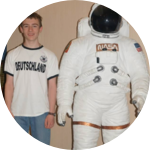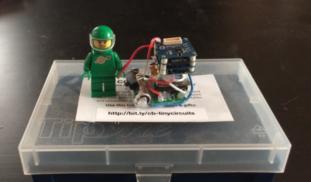Please wait...
About This Project
Our team is testing the TinyDuino, which is a new, small, stackable microcontroller with low power consumption. It can be used to collect data or control systems as a tiny computer, and could be ideal for small satellites. We are testing it through logging data from a magnetometer, temperature sensor, and accelerometer to a micro SD card. This microcontroller could reduce the cost of launching small satellites by allowing them to be smaller. It could also allow standard sized craft to do more.
More Lab Notes From This Project

Browse Other Projects on Experiment
Related Projects
How Useful Could a Tiny New Microcontroller be for Small Spacecraft?
Our team is testing the TinyDuino, which is a new, small, stackable microcontroller with low power consumption...
An Archaeological Excavation of a Roman Bath Complex
Water, water every where, nor any drop to bathe in. The Roman town of Cosa on the western coast of Italy...
Transition from Formula to Baja
Bobcat Motorsports is a dedicated and enthusiastic team of students from Montana State University competing...





